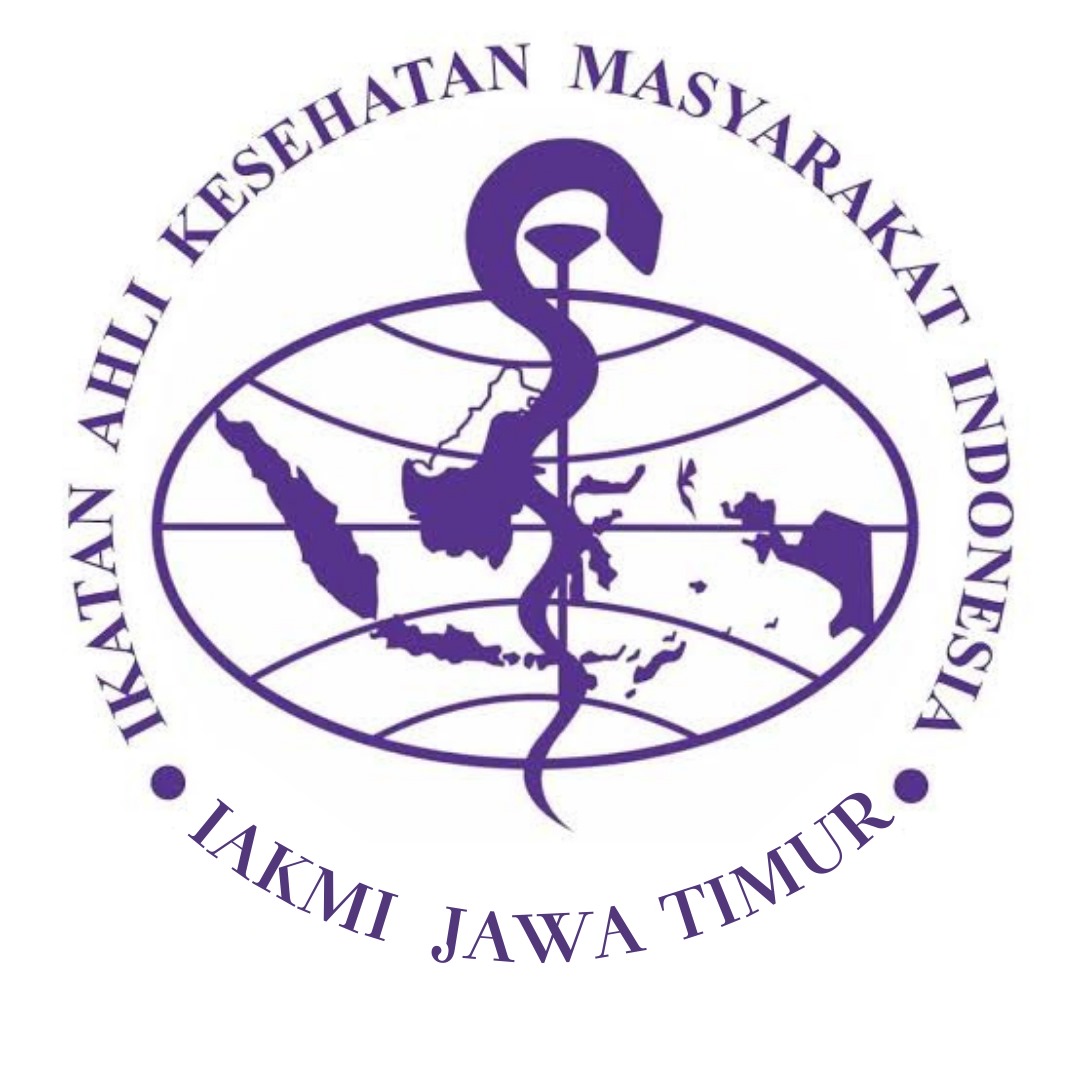Literature Review: The Effectiveness of Apigenin Phytochemicals in Lowering Blood Pressure

Downloads
Background: High blood pressure or hypertension is a non-communicable disease, but it is one of the leading causes of death in the world. In 2023, the World Health Organization (WHO) stated that 46% adults suffer from hypertension and most are unaware of it. One of the treatments for hypertension is to use non-pharmacological, namely apigenin-type flavonoids. Apigenin has antioxidant, anti-inflammatory, and anti-apoptosis activity so it has the potential to lower blood pressure with a decrease in oxidative stress.
Objective: This study aims to examine the effectiveness of apigenin on blood pressure reduction based on existing literature.
Methods: Secondary data were obtained from searching scientific articles through the PubMed and Science Direct databases within the last five years (2020-2024). After screening, four scientific articles met the criteria and could be used to continue this research.
Result: The results of the literature review reported that apigenin is a type of flavonoids that lower blood pressure by preventing blood vessels from narrowing by reducing oxidative stress and inflammation. Apigenin is known to have a Pthalide element that can relax blood vessels, allowing blood output from the heart to be smooth and slowly blood pressure will return to normal. Apigenin is also known to help prevent kidney damage caused by low-fat diets. Studies also show that apigenin can increase nitrate oxidation, reduce oxidative stress, and reduce the risk of atherosclerosis.
Conclusion: This review concluded that apigenin can be a non-pharmacological drug in lowering blood pressure by decreasing oxidative stress. In addition, apigenin can be antioxidant, anti-cancer, anti-inflammatory, and anti-bacterial. However, the right dose to lower blood pressure still needs further research.
Akram, A. et al. (2023) ‘Evaluation of Caralluma edulis for its Potential Against Obesity, Atherosclerosis and Hypertension’, Dose-Response, 21(1), pp. 1–12. https://doi.org/10.1177/15593258231152112.
Aldayel, T.S. (2022) ‘Apigenin attenuates high-fat diet-induced nephropathy in rats by hypoglycemic and hypolipidemic effects, and concomitant activation of the Nrf2/antioxidant axis’, Journal of Fuctional Foods [Preprint]. https://doi.org/10.1016/j.jff.2022.105295.
Allemailem, K.S. et al. (2024) ‘Apigenin: A Bioflavonoid with a Promising Role in Disease Prevention and Treatment’, Biomedicines, 12(6). https://doi.org/10.3390/biomedicines12061353.
Charrière, K. et al. (2024) ‘Exploring the Role of Apigenin in Neuroinflammation: Insights and Implications’, International Journal of Molecular Sciences, 25(9). https://doi.org/10.3390/ijms25095041.
Clayton, Z.S. et al. (2021) ‘Apigenin Restores Endothelial Function by Ameliorating Oxidative Stress, Reverses Aortic Stiffening, and Mitigates Vascular Inflammation with Aging’, American Journal of Physiology - Heart and Circulatory Physiology, 321(1), pp. 185–196. https://doi.org/10.1152/ajpheart.00118.2021.
Handayani, L. and Widowati, L. (2020) ‘Analisis Lanjut Pemanfaatan Empiris Ramuan Seledri (Apium graveolens L) oleh Penyehat Tradisional’, Jurnal Kefarmasian Indonesia, 10(1), pp. 31–41. https://doi.org/10.22435/jki.v10i1.1718.
Kementerian Kesehatan Indonesia (2023) Survei Kesehatan Indonesia (SKI) dalam Angka, Kementerian Kesehatan RI. Jakarta: Kementrian Kesehatan. Available at: https://www.badankebijakan.kemkes.go.id/ski-2023-dalam-angka/.
Kramer, D.J. and Johnson, A.A. (2024) ‘Apigenin: a natural molecule at the intersection of sleep and aging’, Frontiers in Nutrition, 11, pp. 1–12. https://doi.org/10.3389/fnut.2024.1359176.
Lazdia, W. et al. (2020) ‘Pengaruh Rebusan Daun Seledri Untuk Menurunkan Tekanan Darah Pada Penderita Hipertensi’, Empowering Society Journal, 1(1), pp. 26–32. Available at: https://d1wqtxts1xzle7.cloudfront.net/119431624/pdf-libre.pdf?1731070957=&response-content-disposition=inline%3B+filename%3DPengaruh_Rebusan_Daun_Seledri_Untuk_Menu.pdf&Expires=1748152763&Signature=A5wy0z9MB~PyTcfGbHXab-Gn1n5xnz5HVYgTqH6PocOmgm2rkbquaOSqw.
Mou, A. et al. (2024) ‘Dietary apigenin ameliorates obesity-related hypertension through TRPV4-dependent vasorelaxation and TRPV4-independent adiponectin secretion’, Biochimica et Biophysica Acta - Molecular Basis of Disease, 1870(8). https://doi.org/10.1016/j.bbadis.2024.167488.
Mushtaq, Z. et al. (2023) ‘Therapeutical properties of apigenin: a review on the experimental evidence and basic mechanisms’, International Journal of Food Properties, 26(1), pp. 1914–1939. https://doi.org/10.1080/10942912.2023.2236329.
Nahor, E.M. et al. (2023) ‘Kajian Efek Antihipertensi Daun Seledri (Apium graveolens L)’, Prosiding Seminar Nasional Dies Natalis Poltekkes Kemenkes Manado XXII Tahun 2023, pp. 120–124. Available at: https://ejurnal.poltekkes-manado.ac.id/index.php/prosiding2023/article/view/1958.
Nault, D. (2023) Apigenin, Examine. Available at: https://examine.com/supplements/apigenin/ (Accessed: 20 June 2024).
Nuraisyah, F. and Saputri, E.I. (2023) ‘Intervensi Jus Wortel terhadap Pasien Hipertensi: Systematic Literature Review of True-Experimental Design’, Jurnal Kesehatan, 14(3), pp. 561–568. https://doi.org/10.26630/jk.v14i3.3554.
Putri, A.D.A.R. and Astuti, K.W. (2023) ‘Pemanfaatan Senyawa Apigenin Bunga Chamomile (Matricaria recutita L.) dalam Sediaan Farmasi Nutrasetikal untuk Meningkatkan Kualitas Tidur’, Prosiding Workshop dan Seminar Nasional Farmasi, 2, pp. 162–173. https://doi.org/10.24843/wsnf.2022.v02.p13.
Rahmadayanti, A.M., Apriyani, T. and Musaddas, R. (2024) ‘Efektivitas Jus Buah Naga Merah (Hylocereus Polyrhizus) terhadap Hipertensi pada Wanita Menopause di PMB Lismarini Palembang’, Al-Insyirah Midwifery : Jurnal Ilmu Kebidanan (Journal of Midwifery Sciences), 13(2), pp. 128–136. https://doi.org/10.35328/kebidanan.v13i2.2727.
Rochmah, F.A., Purnama, A. and Puspanditaning, A. (2024) ‘Pengaruh Air Rebusan Daun Salam terhadap Penurunan Tekanan Darah pada Penderita Hipertensi: Systematic Literature Review’, Jurnal Ners Universitas Pahlawan, 8(38), pp. 1133–1139. https://doi.org/10.31004/jn.v8i2.26203.
Siddiquee, R. et al. (2025) ‘Apigenin unveiled : an encyclopedic review of its preclinical and clinical insights’, Discover Plants, 2(11). https://doi.org/10.1007/s44372-024-00039-6.
Simamora, L., Br.Pinem, S. and Rista, H. (2021) ‘Pembudidayaan Seledri di Pekarangan Rumah sebagai Alternatif Penurunan Hipertensi pada Lansia’, Prosiding PKM-CSR, 4, pp. 411–414. Available at: https://d1wqtxts1xzle7.cloudfront.net/101330248/656-libre.pdf?1682092167=&response-content-disposition=inline%3B+filename%3DPembudidayaan_Seledri_DI_Pekarangan_Ruma.pdf&Expires=1748153098&Signature=RYC80YNRS0yshlSwL8N17fj1RMuRu8wLfYXADcK9CFN5qsrGJEJgwO9b6.
Simamora, L., Pinem, S.B. and Fithri, N. (2021) ‘Efektifitas Jus Seledri terhadap Penurunan Tekanan Darah pada Lansia Penderita Hipertensi di Wilayah Kerja Puskesmas Simalingkar’, Journal of Health, 8(2), pp. 67–74. https://doi.org/10.30590/joh.v8n2.p67-74.2021.
Thomas, S.D. et al. (2023) ‘Pharmacological and Molecular Insight on the Cardioprotective Role of Apigenin’, Nutrients, 15(2). https://doi.org/10.3390/nu15020385.
Tomou, E.M. et al. (2023) ‘Bio-Actives from Natural Products with Potential Cardioprotective Properties: Isolation, Identification, and Pharmacological Actions of Apigenin, Quercetin, and Silibinin’, Molecules, 28(5). https://doi.org/10.3390/molecules28052387.
Ulhaq, Z.S. and Rahmayanti, M. (2020) Panduan Penulisan Skripsi : Literatur Review, Fakultas Kedokteran dan Ilmu Kesehatan Universitas Islam Negeri Maulana Malik Ibrahim Malang. Malang. Available at: https://kedokteran.uin-malang.ac.id/wp-content/uploads/2020/10/PANDUAN-SKRIPSI-LITERATURE-REVIEW-FIXX.pdf.
World Health Organization (2023) Hypertention. Available at: https://www.who.int/news-room/fact-sheets/detail/hypertension (Accessed: 6 June 2024).
Xu, Y., Li, X. and Wang, H. (2022) ‘Protective Roles of Apigenin Against Cardiometabolic Diseases: A Systematic Review’, Frontiers in Nutrition, 9, pp. 1–16. https://doi.org/10.3389/fnut.2022.875826.
Copyright (c) 2025 Neffa Syavella Angelica, Dominikus Raditya Atmaka

This work is licensed under a Creative Commons Attribution-ShareAlike 4.0 International License.
Media Gizi Kesmas by Unair is licensed under a Creative Commons Attribution-ShareAlike 4.0 International License.
1. The journal allows the author(s) to hold the copyright and to retain the publishing right of the article without restrictions.
2. The legal formal aspect of journal publication accessibility refers to Creative Commons Attribution-Share-Alike (CC BY-SA).
3. The Creative Commons Attribution-Share-Alike (CC BY-SA) license allows re-distribution and re-use of a licensed work on the conditions that the creator is appropriately credited and that any derivative work is made available under "the same, similar or a compatible license”. Other than the conditions mentioned above, the editorial board is not responsible for copyright violations.



















